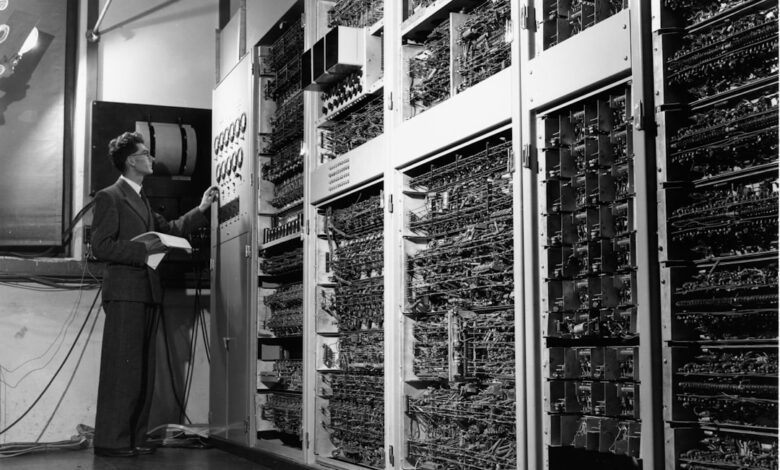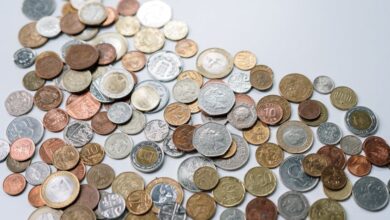Metals in Motion: Navigating the Complex Interplay of Industry, Investment, and Sustainability

In today's rapidly evolving economic landscape, the significance of metals extends far beyond traditional uses, intertwining with technological advancements, investment strategies, and global market trends. This article delves into the multifaceted roles of various metals, starting with silver, which serves both industrial purposes and as a popular investment vehicle. We will explore how copper prices function as a barometer of global economic health, reflecting broader trends that affect industries and consumers alike. With the rise of green energy technologies, the demand for rare earth metals has surged, highlighting the critical intersection of sustainability and resource management. Additionally, we will compare platinum and palladium to determine which precious metal offers better investment prospects in the current climate.
As inflation continues to influence market dynamics, understanding how it affects the prices of both precious and industrial metals becomes essential for investors. We will also consider the future of aluminum within a sustainable economy and analyze how mining regulations shape metal prices. By examining these interconnected topics, we aim to provide a comprehensive overview of the vital role metals play in diversifying investment portfolios and their broader implications for the economy and the environment.
- 1. **Silver's Dual Function: Industrial Utility and Investment Appeal**
- 2. **Copper Prices as Economic Barometers: Understanding the Link**
- 3. **Green Energy Revolution: Driving Demand for Rare Earth Metals**
1. **Silver's Dual Function: Industrial Utility and Investment Appeal**
Silver plays a unique and dual role in both industrial applications and investment markets, making it a versatile and valuable metal. On the industrial side, silver is extensively used in electronics, solar panels, medical devices, and batteries due to its excellent conductivity and antibacterial properties. The growth of technology and renewable energy sectors has driven increased demand for silver, particularly with the rise of electric vehicles and solar energy installations. This industrial utility establishes a strong foundational demand that can influence prices and market stability.
In addition to its industrial applications, silver holds significant appeal as an investment asset. Often viewed as a safe-haven asset, silver tends to attract investors during periods of economic uncertainty or inflation. Unlike gold, which is often seen as a primary store of value, silver's lower price point makes it more accessible to a broader range of investors. Furthermore, silver has been historically used as a hedge against currency devaluation, adding to its attractiveness during inflationary periods.
The interplay between silver’s industrial demand and its investment allure creates a dynamic market. As technological advancements and shifts in consumer behavior continue to evolve, the demand for silver in industrial applications may grow, potentially driving prices higher. Simultaneously, investor sentiment and macroeconomic factors can influence market fluctuations. Understanding this dual function is crucial for investors looking to navigate the complexities of silver as both a commodity and a financial instrument.
2. **Copper Prices as Economic Barometers: Understanding the Link**
Copper prices have long been regarded as a reliable indicator of global economic health, often dubbed "Dr. Copper" for its ability to diagnose the state of the economy. This is primarily due to copper's widespread use in various industries, including construction, electronics, and renewable energy. As a key component in electrical wiring, plumbing, and machinery, copper demand tends to rise during periods of economic expansion, leading to higher prices. Conversely, during economic downturns, reduced industrial activity typically results in lower demand and falling prices.
The correlation between copper prices and economic performance can be attributed to several factors. For instance, infrastructure development and construction projects significantly boost copper consumption. In emerging markets, particularly in Asia, rapid urbanization and industrialization drive demand, resulting in price increases that reflect anticipated growth. Additionally, fluctuations in copper prices can signal shifts in investor sentiment regarding economic prospects, with rising prices often indicating confidence in future growth and declining prices reflecting concerns over potential recessions.
Moreover, geopolitical factors and supply chain dynamics can influence copper prices. Natural disasters, labor strikes, or political unrest in major copper-producing countries can create supply constraints, leading to price spikes. On the other hand, technological advancements in extraction and recycling can enhance supply, impacting prices in the opposite direction.
In conclusion, monitoring copper prices provides valuable insights into economic trends and conditions. Investors and analysts often look to this metal as a leading indicator of global economic activity, making it an essential barometer for assessing market health and future investment opportunities.
3. **Green Energy Revolution: Driving Demand for Rare Earth Metals**
The green energy revolution is reshaping the global economy and accelerating the demand for rare earth metals, which are critical components in various technologies aimed at reducing carbon footprints. As nations strive to transition from fossil fuels to renewable energy sources, the need for advanced materials that support this shift has become increasingly evident. Rare earth metals, such as neodymium and dysprosium, are essential for manufacturing high-performance magnets used in wind turbines and electric vehicle (EV) motors.
The surge in EV production and the expansion of renewable energy infrastructure, such as solar panels and energy storage systems, directly correlate with increased demand for these metals. For instance, the International Energy Agency (IEA) projects that the number of electric vehicles on the road could reach 145 million by 2030, significantly boosting the consumption of rare earth elements. Additionally, advancements in battery technologies, which rely on lithium and cobalt, further emphasize the interdependence of various materials in the green energy landscape.
Moreover, as governments implement policies to promote sustainability—such as tax incentives for green technologies and stricter emissions regulations—the demand for rare earth metals is expected to rise. This growing reliance creates potential supply chain vulnerabilities, as rare earth metals are predominantly mined in a few countries, notably China. Consequently, nations are exploring domestic sourcing and recycling initiatives to mitigate risks and ensure a stable supply.
In summary, the green energy revolution is not only driving demand for rare earth metals but also reshaping global supply chains and investment strategies. As the world increasingly prioritizes sustainable practices, the role of these metals in facilitating this transition is set to become even more significant, making them a key area of focus for investors and policymakers alike.
In conclusion, the intricate dynamics of the metals market reveal a multifaceted landscape shaped by industrial demand, investment trends, and broader economic indicators. Silver stands out with its unique dual function, serving both as a critical industrial resource and a popular investment asset. Similarly, copper prices provide valuable insights into global economic health, acting as a bellwether for growth and stability. The burgeoning green energy sector has further intensified the demand for rare earth metals, highlighting the pivotal role these resources play in advancing sustainable technologies.
As investors weigh options between platinum and palladium, understanding the distinct characteristics and market behaviors of these metals becomes essential. Moreover, the strategic inclusion of various metals in investment portfolios can enhance diversification, especially in an environment where inflation continuously impacts the value of precious and industrial metals. Looking ahead, aluminum's promise in a sustainable economy, coupled with the implications of mining regulations on metal prices, underscores the need for adaptability and foresight in both industrial and investment strategies.
Overall, a comprehensive understanding of these elements not only informs investment decisions but also underscores the significance of metals in shaping a sustainable future. As the global landscape continues to evolve, staying informed on these trends will be crucial for investors and industry stakeholders alike.





